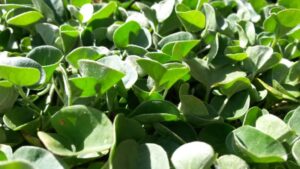Whether you’re starting fresh or looking to expand your landscape, let’s explore some of the best evergreen options for Zone 6.
Emerald Green Arborvitae (Thuja occidentalis ‘Emerald Green’)
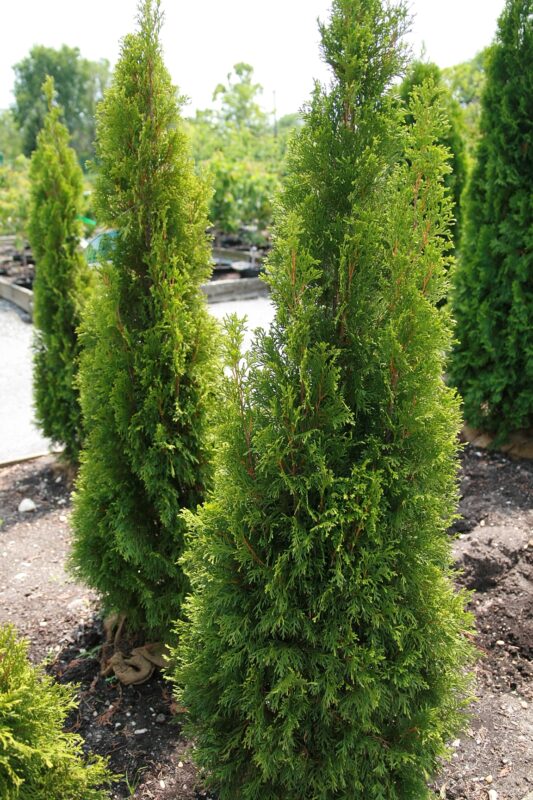
If you’re seeking a stellar evergreen for privacy and a touch of elegance, look no further than the Emerald Green Arborvitae. This conifer is revered for its graceful, narrow growth habit, reaching heights of 10 to 15 feet while only spreading about 3 to 4 feet wide. Its vibrant, rich green foliage maintains its color throughout the seasons, providing a lush backdrop in any garden.
Emerald Green Arborvitae is often planted as a windbreak or a privacy screen, creating a beautiful living fence that enhances the landscape without overwhelming it. Moreover, this hardy tree is tolerant of various soil types and conditions. It thrives in full sun to partial shade and requires minimal maintenance — a quick trim in late spring is all that’s needed to maintain its shape.
Care wise, it’s beneficial to provide consistent moisture, especially during its establish phase. Be mindful of potential deer browsing, as they may find this tree appealing. Overall, the Emerald Green Arborvitae is a perfect addition for gardeners looking for a low-maintenance evergreen that still delivers stunning visual impact.
Eastern White Pine Tree (Pinus strobus)
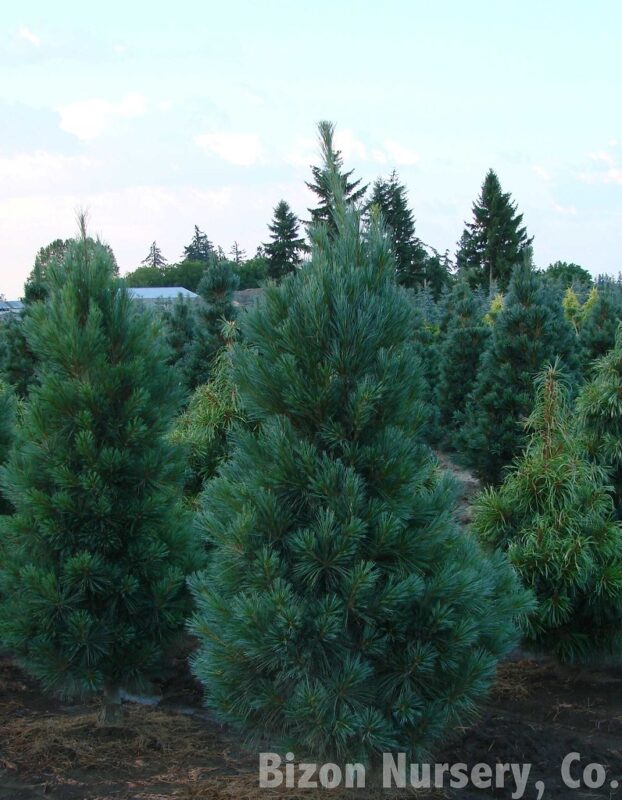
The Eastern White Pine is one of North America’s most majestic trees, known for its soaring height and soft, flexible needles. Typically growing to heights of 50 to 80 feet, this tree is an excellent choice for larger landscapes or properties where shade is appreciated. Its graceful, open structure and feathery needles create a serene and peaceful atmosphere.
This evergreen thrives in well-drained, sandy soils, though it is adaptable to various conditions, making it a wonderful addition to Zone 6 gardens. Eastern White Pines are also relatively low-maintenance — requiring little pruning and tolerating poor soil conditions once established.
From a wildlife perspective, this tree is exceptional. Eastern White Pine offers nesting opportunities for birds and shelter for various wildlife, including squirrels. Its cones are also a food source for birds and small mammals. Whether used for landscaping or a naturalized area, the Eastern White Pine adds character and biodiversity, making it a favorite among both gardeners and naturalists.
Nellie Stevens Holly Tree (Ilex x ‘Nellie R. Stevens’)
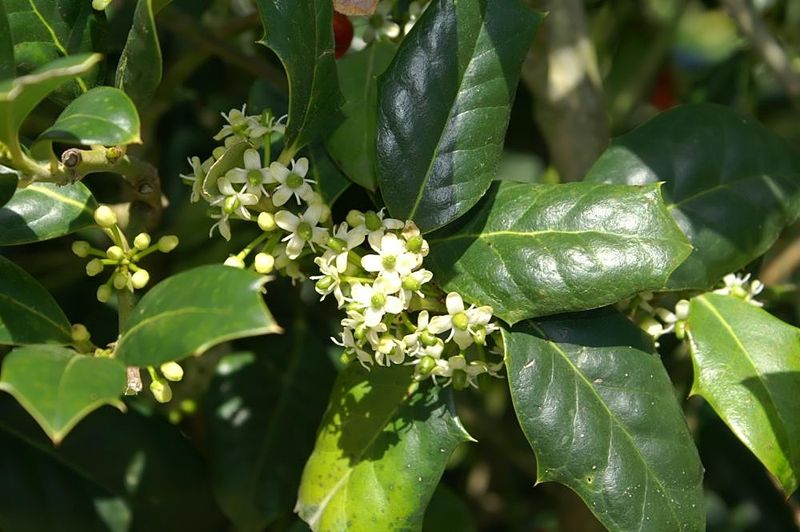
The Nellie Stevens Holly tree is a fantastic option for those seeking an evergreen that offers both beauty and functionality. With glossy, dark green leaves and bright red berries that emerge in the fall, this tree brings a festive touch to any yard. It can grow into a sizeable shrub or small tree, reaching heights of 15 to 25 feet with a similar spread.
One of the most appealing aspects of the Nellie Stevens Holly is its adaptability. It thrives in a variety of soil types and performs well in both full sun and partial shade. As a result, it can fit seamlessly into your landscape design, whether as a specimen plant, in hedges, or as a foundation planting.
This holly is also a robust performer in terms of wildlife support. Its berries attract birds throughout winter when food sources become scarce. Being a deer-resistant species, it’s also an excellent choice for gardeners who worry about wildlife damage. With minimal care — primarily occasional pruning to maintain shape — the Nellie Stevens Holly will continue to shine in your garden for years.
Leyland Cypress Tree (x Cupressocyparis leylandii)

When speed and privacy are vital, the Leyland Cypress is a preferred choice among homeowners. Known for its fast growth rate, this tree can reach heights of 50 to 70 feet and can grow 3 to 5 feet per year under optimal conditions. Its dense, evergreen foliage provides an instant privacy screen, making it an excellent choice for borders and windbreaks.
Leyland Cypress adapts well to various soil types and can handle different light conditions, though it thrives best in full sun. This adaptability is one reason for its popularity in residential landscaping. While they are fairly drought-tolerant once established, regular watering will encourage more vigorous growth.
Regular maintenance is minimal; however, pruning is encouraged in early spring to maintain its shape and prevent it from becoming too unwieldy. Be aware that these trees can be more susceptible to certain pests and diseases, so regular monitoring is recommended. If you need a fast-growing and dependable screen, the Leyland Cypress is a wonderful option for any Zone 6 gardener.
Fat Albert Colorado Blue Spruce (Picea pungens ‘Fat Albert’)

For a unique twist on traditional evergreen landscapes, consider the Fat Albert Colorado Blue Spruce. This compact conifer stands out with its rounded shape and striking blue-green needles, making it a must-have for gardeners looking to add an eye-catching focal point to their landscape. It typically grows to a height of 10 to 12 feet and has a spread of about 6 to 8 feet.
Fat Albert is not just attractive; it is also surprisingly hardy. It thrives best in well-drained, sandy soils but can tolerate clay with good drainage. Full sun is ideal for promoting its vibrant color, while partial shade may lead to more muted hues.
Additionally, the Fat Albert Colorado Blue Spruce is low-maintenance once established. It requires minimal pruning but can benefit from occasional trimming to maintain its rounded form. This evergreen provides year-round appeal and is especially striking when dusted with snow, making it a delightful addition to any garden space in Zone 6.
Taylor Juniper (Juniperus virginiana ‘Taylor’)

The Taylor Juniper is a fantastic choice for gardeners who appreciate vertical elements in their landscaping. This pyramidal evergreen grows up to 20 feet tall while only spreading about 3 to 4 feet wide, making it ideal for narrow spaces or as an accent plant in larger landscapes. Its rich blue-green foliage adds a pop of color throughout the winter months.
Taylor Juniper thrives in well-drained soil and is exceptionally drought-tolerant. It prefers full sun but can also adapt to partial shade. Its low-maintenance characteristics make it appealing to both novice and experienced gardeners alike; it requires minimal pruning and attention once established.
Moreover, the Taylor Juniper is resistant to many pests and diseases, making it a resilient choice. Not only is it beautiful and functional, with its dense foliage offering privacy and wind protection, but it also attracts birds that are drawn to its berries. In a landscape design, it can be used as a standalone feature, in group plantings, or as part of a mixed border.
Cryptomeria Radicans (Cryptomeria japonica ‘Radicans’)
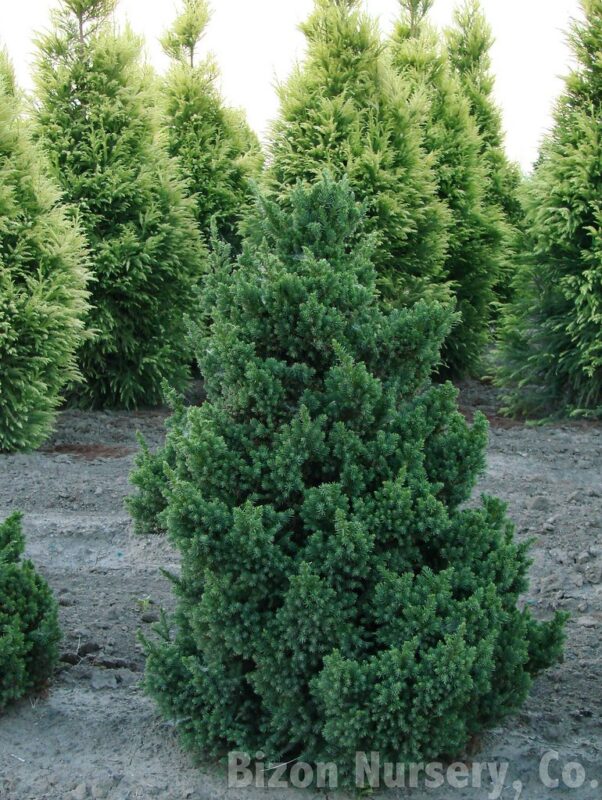
The Cryptomeria Radicans might not be as commonly known as other evergreens, but it certainly deserves a place in any Zone 6 garden. This Japanese cedar features soft, feathery foliage that takes on a delightful green hue, often turning bronze in winter, adding a unique touch of color to the landscape.
This tree grows at a moderate pace and can reach heights of 20 to 30 feet with a width of 10 to 15 feet. It prefers moist, well-drained soil and can handle both full sun and partial shade. The Cryptomeria Radicans is a low-maintenance option once established and is tolerant of varying soil types, which enhances its versatility in landscape designs.
In addition to its aesthetic appeal, this tree is also praised for its resistance to pests and diseases, making it a strong candidate for sustainable gardens. Furthermore, its dense growth pattern provides excellent privacy and windbreak solutions. As gardeners embrace a more diverse array of flora, the Cryptomeria Radicans is a wonderful option to consider.
Slender Hinoki Cypress Tree (Chamaecyparis obtusa ‘Gracilis’)
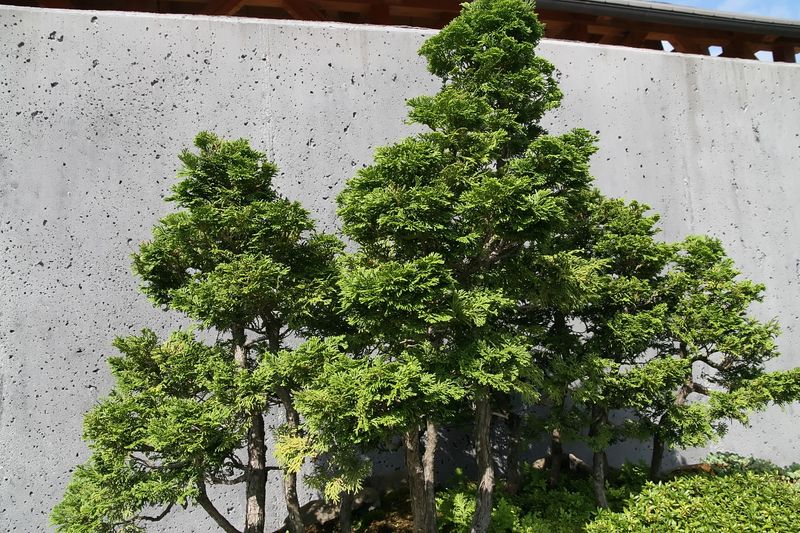
For those dreaming of an elegant, smaller evergreen, the Slender Hinoki Cypress presents a perfect solution. This graceful tree grows to about 10 to 15 feet tall and has a narrow, columnar shape that makes it a great fit for gardens with limited space. Its lush green foliage has a pleasant aroma and offers excellent texture and depth to the landscape.
Slender Hinoki Cypress thrives in well-drained soils and prefers full sun to partial shade. It’s relatively slow-growing, which allows for better shaping and management over time. It requires minimal pruning; however, occasional maintenance may be needed to maintain its form.
This evergreen is prized not just for its beauty but also for its resilience against pests and diseases. Its unique shape makes it a magnificent specimen tree, ideal for entryways or as a statement piece in formal gardens. In addition, its dense foliage can provide year-round screening and a sanctuary for various birds, lending to a more vibrant garden ecosystem.
Hollywood Juniper Tree (Juniperus chinensis ‘Kaizuka’)

The Hollywood Juniper, also known as the “Jerusalem Cedar,” is an evergreen that boasts an exotic appearance with its contorted, upright branches and dense foliage. This unique feature allows it to reach heights of 15 to 20 feet while not spreading more than 6 to 10 feet, making it an interesting vertical statement in any garden.
This juniper variety is quite adaptable, thriving in a range of soil conditions, from sandy to rocky. Full sun exposure helps maintain its rich color, while it’s moderately drought-tolerant once established. The Hollywood Juniper also has low maintenance requirements, needing occasional pruning to maintain its graceful shape.
In terms of wildlife, this tree provides shelter and food for birds and other wildlife, making it a great choice for enhancing biodiversity in your garden. Its striking appearance can easily complement any landscape, whether used in group plantings, as a standalone feature in a rock garden, or to create dramatic borders.
Loblolly Pine Tree (Pinus taeda)
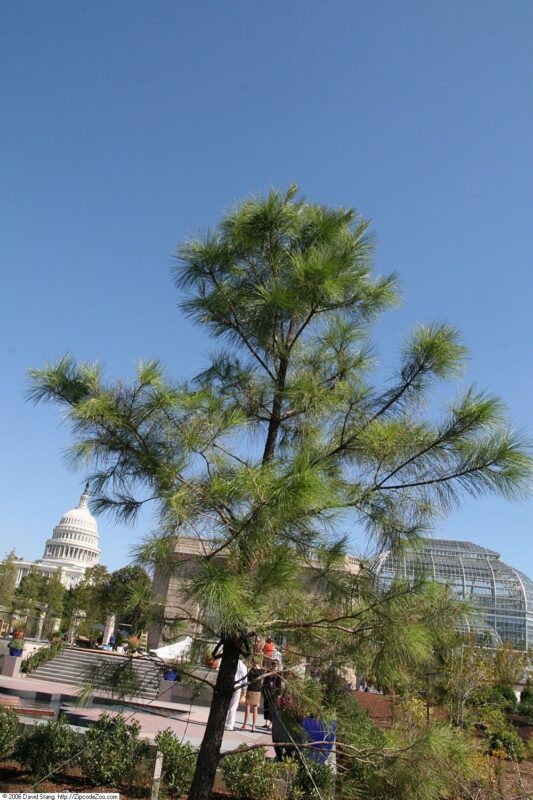
The Loblolly Pine is another impressive evergreen that thrives well in Zone 6. This tree is recognized for its rapid growth and can reach heights of 40 to 100 feet, making it a great option for creating a towering focal point within your landscape. The long, slender needles lend a soft texture, adding warmth and elegance to any area.
Loblolly Pines prefer moist, well-drained soils and thrive in full sun. They are moderately salt-tolerant, making them a suitable choice for coastal or warmer areas. As a fast-growing species, they are often used for restoration projects and as timber trees.
In terms of landscaping, the Loblolly Pine can provide shade for smaller plants beneath its canopy while offering shelter and food sources for various bird species in its branches. This hardy evergreen is not only a functional choice but also contributes to the overall beauty of the outdoor environment.
American Holly (Ilex opaca)
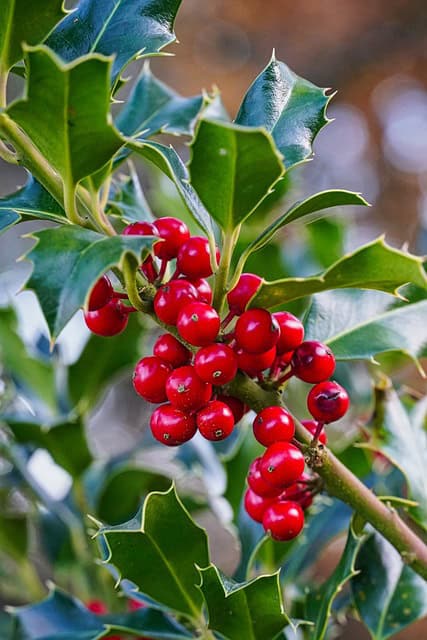
The American Holly is a classic choice in evergreen gardening that charms with its glossy green leaves and striking red berries that persist throughout winter. This beautiful tree can grow to 15 to 30 feet tall, offering a lovely tree form with a dense branching pattern.
American Hollies are adaptable to various soil conditions and can tolerate partial shade but thrive in full sun. They prefer moist, well-drained soils, and requiring little maintenance apart from occasional pruning to shape their growth.
These evergreens are also instrumental in supporting wildlife. The bright berries are not only visually appealing; they become a food source for birds in winter, attracting various species to your garden. In addition to its functional attributes, the American Holly stands as a quintessential landscape tree treasured for its beauty and historical significance.
Deodar Cedar (Cedrus deodara)
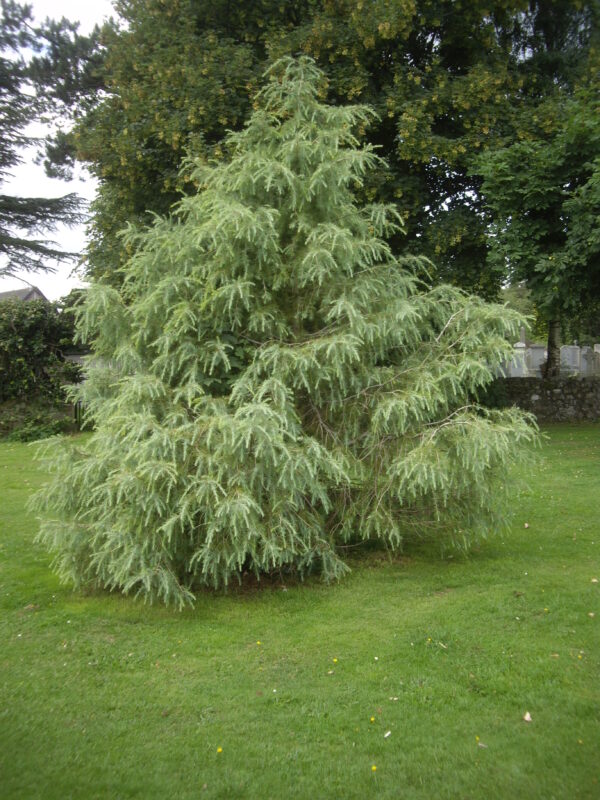
The Deodar Cedar is a majestic conifer that reflects the beauty of mountainous landscapes. This stunning evergreen can grow up to 40 to 70 feet tall, characterized by its drooping branches and soft, needle-like foliage that provides a unique aesthetic. The bluish-green color of the needles adds a refreshing contrast to standard greenery and can create stunning visual depth in your landscape.
This cedar thrives best in well-drained soil and enjoys full sun, making it suitable for exposed areas where other plants may struggle. While it is relatively low-maintenance, providing supplemental watering during hot months can heighten its resilience.
Beyond its beauty, the Deodar Cedar offers considerable ecological benefits. Its dense branches provide shelter for birds and small mammals, while its majestic stature can serve as the centerpiece in a grand design. Additionally, its fragrance can evoke the soothing ambiance of nature in any garden, making it a splendid choice for your landscape.
Nandina (Nandina domestica)
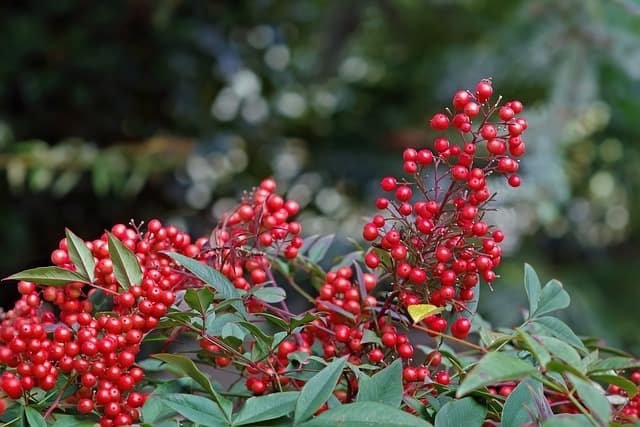
While not a tree, Nandina is a beloved evergreen shrub that can offer delightful contrast and color to Zone 6 gardens. Commonly referred to as heavenly bamboo, this shrub features delicate, feathery foliage that changes throughout the seasons, showcasing fresh green hues in spring before transitioning to shades of red and bronze in fall and winter.
Nandina thrives in various light conditions, from full sun to partial shade, making it a versatile addition to almost any landscape design. It is tolerant of different soil types, though it prefers well-drained positions. This shrub requires minimal maintenance, as it naturally takes on an attractive shape and manages pests and diseases.
The highlight is its small, white flowers that bloom in late spring, followed by clusters of vivid red berries in the fall and winter, providing visual interest and food for birds. Adding Nandina to your landscape not only enhances beauty through all seasons but also supports local wildlife, making it an excellent choice for eco-friendly gardening.
Conclusion: Choose Your Evergreens Wisely!
Selecting evergreens for your garden in Zone 6 goes beyond mere aesthetics; it offers an opportunity to create a vibrant, functional landscape that thrives year-round. As you consider your options, think about the unique characteristics required for your space — be it height, color, or wildlife support. From the stately Loblolly Pine to the architectural beauty of the Fat Albert Colorado Blue Spruce, the possibilities are vast.



